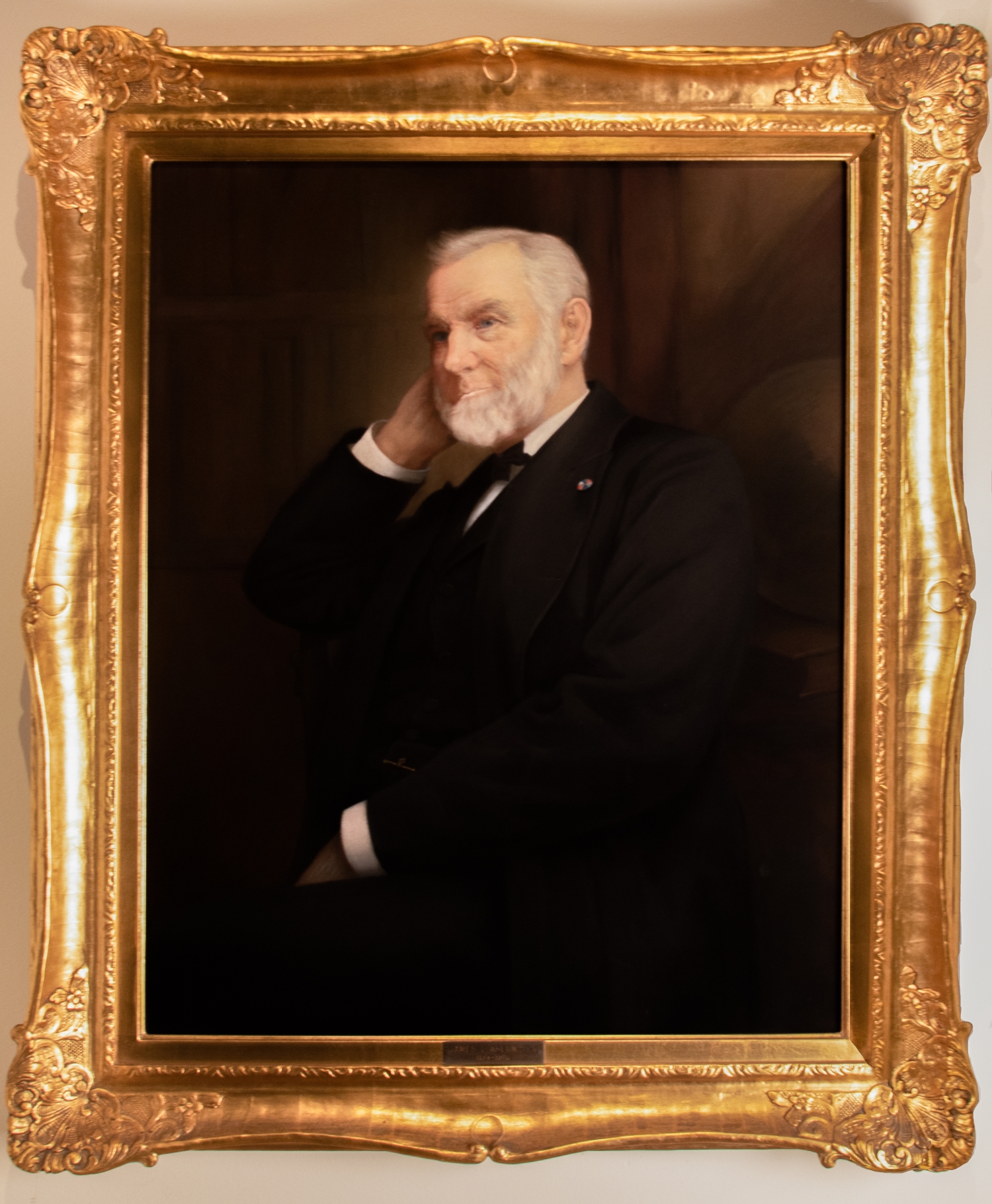Portrait of James L. Abernathy
Col. James L. Abernathy was born in Warren County, Ohio, March 20, 1833. Abernathy was famed for his business acumen, most notably Leavenworth, KS where he moved in 1856. Abernathy helped stimulate the economic growth of Leavenworth, turning it into a veritable Midwest-Boomtown in the nineteenth century. Abernathy and his brother William began in the retail furniture business. Their operation was the rudiment to what later became a furniture manufacture, and one of the largest of Leavenworth’s industries. Abernathy also had a successful military career. He was given the rank of captain of Company K Eighth Kansas Volunteer Infantry, and was in charge of this company on its forced march from Fort Scott to Fort Kearney, in Nebraska. Later Abernathy served through the Cumberland Valley campaign, and was a participant in the Battle of Chickamauga. When the war abated he continued his business pursuits in Leavenworth. In 1859, Abernathy married Elizabeth Martin and they had six children. In 1886 Abernathy was one of the initial organizers of the First National Bank of Kansas City, of which he became director, vice president, and president. This chalk rendering of Abernathy captures a centered seated figure in his mature years. Abernathy is dressed in a three piece black suit with a white shirt and black bow tie. He leans back against the chair as the picture of stalwart success. Abernathy sits cross legged, in a posture that suggests a refined professionalism, with his head supported by his right hand, and his left arm lays on across his left shin. The back ground is muted in color, but gives the suggestion of a bookcase to Abernathy's right, a reddish curtain in the middle of the portrait and a globe positioned on a book to his left.

